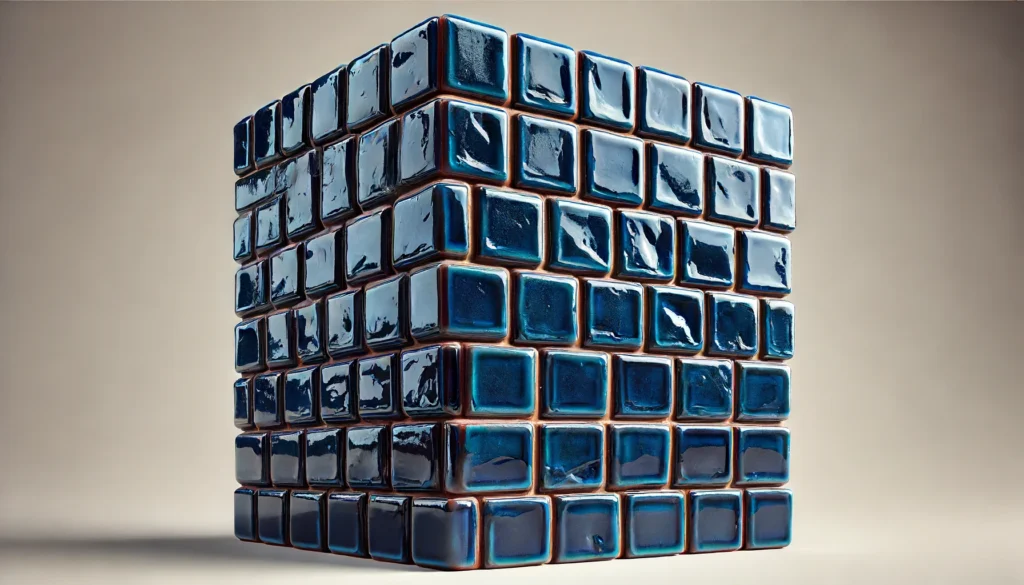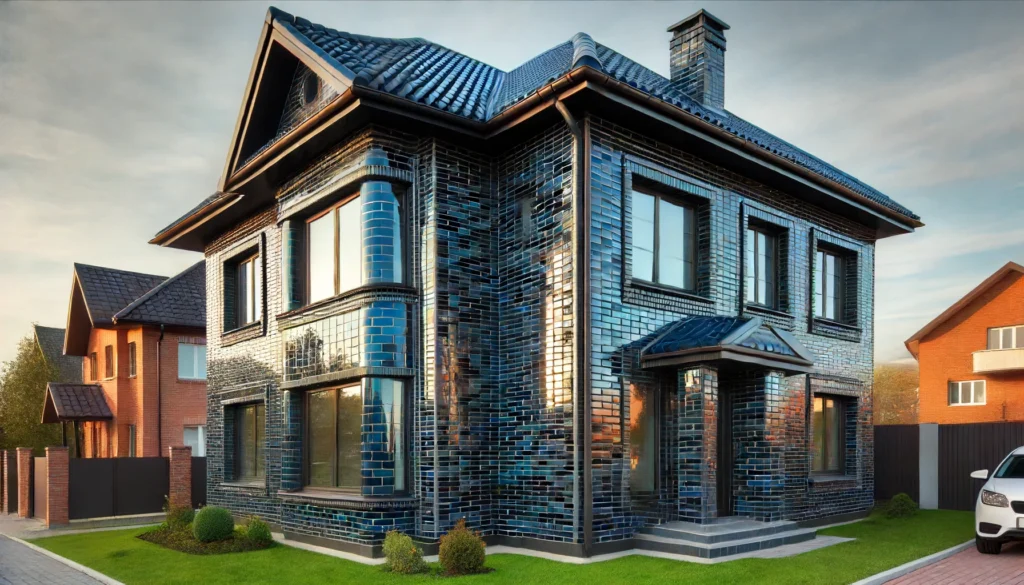Introduction to Masonry Surfaces in Construction
Have you ever wondered how the resilient buildings around you stay strong for decades?
It’s largely due to the materials used in their construction process, with masonry surfaces playing a key role.
In this article, we’re going to graze the surface (pun intended!) of masonry surfaces in construction – specifically focusing on the benefits and drawbacks of glazed bricks.
Curious? Let’s get down to some brick-and-mortar business!
Table of Contents
Understanding Masonry Surfaces in Construction
Defining Masonry Surfaces
Before jumping into brick surfaces, it’s helpful to have a holistic view of the different types of stone and block applications available.
To that effect, masonry surfaces are made using individual units held together by mortar – and these units can include a variety of materials such as:
- Brick
- Stone
- Concrete blocks
- Glass blocks
Types of Masonry Surfaces
Brick Masonry
Brick masonry involves building walls using bricks and mortar. It’s known for its durability and aesthetic appeal.
Stone Masonry
Stone masonry uses natural or artificial stone. It provides a timeless and often luxurious look but can be more expensive.
Concrete Block Masonry
Concrete blocks are a common choice for their affordability and ease of use. They can be used for constructing walls, foundations, and more.
Glass Block Masonry
Glass blocks are used for both aesthetic and practical purposes, providing light while maintaining privacy.
Benefits of Masonry Surfaces
| Benefit | Explanation |
|---|---|
| Durability | Masonry surfaces generally last longer than other building materials. |
| Fire Resistance | Materials like brick and stone do not combust, providing good fire resistance. |
| Energy Efficiency | Masonry surfaces offer good insulation, aiding in energy conservation. |
| Low Maintenance | Masonry requires minimal upkeep compared to other materials. |
Applications of Masonry Surfaces
- Residential homes
- Commercial buildings
- Retaining walls
- Fencing
Glazed vs Unglazed Brick in Masonry Surfaces

Distinguishing Between Glazed and Unglazed Brick
When it comes to brick masonry, a key categorization emerges regarding the finish of the brick: glazed and unglazed. While both types are made from the same base material, clay, and are used in masonry construction, their appearance, applications, and maintenance requirements differ considerably due to the glaze utilized.
Inspecting Glazed Brick
Glazed bricks, as their name suggests, come with a glossy coating, which is achieved by applying a glass layer or glaze on the brick surface. This coating can be in various colors, lending an additional design feature for construction projects.
Furthermore, the glazing process seals the brick surface, offering heightened resistance to moisture, stains, and graffiti. This makes glazed bricks particularly suitable for areas that require easy cleaning and maintenance, or those exposed to harsh or damp conditions.
However, glazed bricks may cost more than their unglazed counterparts due to the extra manufacturing process.
Understanding Unglazed Brick
Unglazed bricks, on the other hand, have a more natural and rustic appearance. They offer an authentic, traditional look and a rough texture, which adds to their aesthetic appeal. However, they are more porous and consequently more likely to absorb moisture, making sealing or waterproofing a typical recommendation.
From a cost perspective, unglazed bricks tend to be more affordable than glazed ones, making them an economical choice for many construction projects.
Choosing the Right Brick
When it comes to choosing between glazed and unglazed bricks for your masonry projects, the decision should be guided by the project’s requirements and climate, aesthetic preferences, and budget constraints. Here are some key considerations:
- The location of your project: Is it exposed to moisture or prone to graffiti?
- The design look and feel you’re after: Do you prefer a glossy, smooth finish or a rustic, textured look?
- Your budget: Are you willing to invest in the additional cost for glazed bricks, or is saving on expenses a priority?
What are the Disadvantages of Glazed Bricks?
Higher Cost
One of the most significant drawbacks of using glazed bricks is the cost. The additional process of applying the glaze and curing it in a kiln requires more resources and labor, resulting in a higher price per brick when compared to unglazed options. This factor can be prohibitive, especially for large-scale projects where budget constraints are a major concern.
Potential for Surface Damage
While the glazed surface offers enhanced resistance to moisture and stains, it can also be more susceptible to chipping and cracking. If the glaze becomes damaged, the underlying brick may be exposed, affecting both the aesthetics and performance of the brick. Repairing or replacing glazed bricks can be challenging and costly.
Thermal Expansion Concerns
The glaze coating on bricks reacts differently to temperature changes compared to the base clay material. This difference can cause issues related to thermal expansion and contraction, leading to potential cracks in both the glaze and the brick over time, especially in regions with significant temperature variations.
Limited Breathability
The impermeable nature of the glaze layer can restrict the breathability of the brick. This means that any moisture that does enter the brick will not easily evaporate, potentially leading to issues such as mold growth or freeze-thaw damage in colder climates. Unglazed bricks, being more porous, allow for better breathability, reducing such risks.
Aesthetic Inconsistency
Though glazed bricks offer a shiny, uniform finish, slight variations can occur during the manufacturing process. Inconsistent glazing can lead to a patchy or uneven appearance, which might not align with the desired design aesthetics. This is especially true for large projects where consistent appearance is vital.
Environmental Concerns
The glazing process not only consumes additional resources but also involves firing the bricks at higher temperatures, leading to a higher carbon footprint. This makes glazed bricks less environmentally friendly compared to their unglazed counterparts. For projects aiming for sustainability, this factor can be a significant drawback.
By understanding the disadvantages of glazed bricks, you can make a more informed decision tailored to your project needs. Feel free to refer to more detailed masonry guidelines from reputable sources like Hunker.
How Durable is A Glazed Brick?

Durability Characteristics of Glazed Brick
When evaluating the durability of glazed bricks, it’s essential to take a closer look at the specific qualities that make these bricks a long-lasting choice for many construction projects.
Glazed brick is essentially regular brick that has been coated with a ceramic glaze on its surface and then re-fired in a kiln. This additional layer provides several durability enhancements:
- Resistance to Weathering: The glaze acts as a barrier to water infiltration, significantly reducing the risks associated with freeze-thaw cycles in cold climates where water enters the pores of usual bricks and expands when frozen.
- Protection Against Wear and Tear: The glazed surface is harder and less prone to abrasion. It retains its smooth finish even in high-traffic areas like pathways and public buildings.
- Fire Resistance: Glazed brick shares the strong fire-resistant properties of regular bricks, making it a safe choice for a variety of construction projects.
- UV Stability: The glaze protects the brick’s color from fading due to prolonged exposure to sunlight, ensuring the brick’s appearance remains vibrant over time.
Comparative Analysis: Glazed vs. Unglazed Brick
Understanding the differences between glazed and unglazed bricks can also help in determining their suitability for various applications. Below is a comparative analysis highlighting key durability factors:
| Feature | Glazed Brick | Unglazed Brick |
|---|---|---|
| Weather Resistance | High | Moderate |
| Abrasion Resistance | High | Moderate |
| Fire Resistance | High | High |
| UV Stability | High | Moderate |
| Moisture Absorption | Low | High |
Maintenance Requirements
Given their enhanced durability, glazed bricks also come with distinct maintenance benefits and requirements:
- Minimal Cleaning Effort: The smooth, glossy surface of glazed bricks is easier to clean compared to unglazed bricks. Dirt, graffiti, and stains can often be wiped away with simple cleaning solutions.
- Sealant Optional: Unlike unglazed bricks, which may need regular sealing to conserve their durability, glazed bricks typically do not require additional sealants or treatments.
- Repair Considerations: If a glazed brick does chip or crack, repair can be tricky. While the structure of the brick may hold, the glaze damage can be noticeable and difficult to match when replacing individual bricks.
Ideal Applications for Glazed Bricks
Given their distinctive durability features and maintenance requirements, glazed bricks are particularly well-suited for specific applications where their unique properties can be fully leveraged:
- Historical Restorations: Glazed bricks are often used in the restoration of historic buildings to match the original appearance while upgrading the structure with modern durability.
- Public Infrastructure: Due to their high resistance to weathering and easy maintenance, glazed bricks are ideal for use in schools, hospitals, and other public buildings.
- Exterior Facades: The UV stability and abrasion resistance make glazed bricks a perfect choice for the outer walls of commercial buildings, maintaining their aesthetic for longer periods.
Conclusion: Exploring the World of Masonry Surfaces

To Glaze Or Not To Glaze
In the construction of various infrastructures, masonry surfaces continue to play a fundamental role. From familiar options like brick, stone, and concrete blocks to the incorporation of glass blocks, these materials provide durability, aesthetic appeal, and cost-effective solutions.
Determining the right masonry surface for a specific project requires careful consideration of not only the desired outcome in terms of design and budget but also an understanding of how the material will behave under different conditions. The choice between glazed and unglazed bricks is an excellent example of this decision-making process. While the added layer of glaze may offer protection against weathering and heightened abrasion resistance, it also comes with considerations related to cost, potential surface damage, and sustainability.
Ultimately, a comprehensive understanding of these materials and their respective pros and cons empowers project owners, architects, and builders to make decisions best aligned with their desired outcome and long-term requirements.
Frequently Asked Questions – FAQs
What are the main types of masonry surfaces?
Brick, stone, concrete block, and glass block are the most common types of masonry surfaces.
What is the difference between glazed and unglazed bricks?
Glazed bricks have a glossy coating that offers superior resistance to moisture and stains, whereas unglazed bricks have a more natural, porous texture and require extra care to prevent moisture absorption.
Are glazed bricks worth the extra cost?
This largely depends on the specific requirements of a project. If durability and ease of maintenance are priorities, the extra cost of glazed bricks may be justified. However, cost constraints and sustainability considerations may favor unglazed bricks.
Can unglazed bricks be used for outdoor projects?
Yes, unglazed bricks can be used in outdoor projects, though they are more sensitive to moisture and may require sealing or waterproofing treatments.
How robust is glazed brick compared to other masonry surfaces?
The ceramic glaze on glazed bricks makes them significantly durable, with high resistance to weathering, abrasion, and UV degradation. They hold up well compared to other masonry surfaces in terms of wear and tear and longevity.






